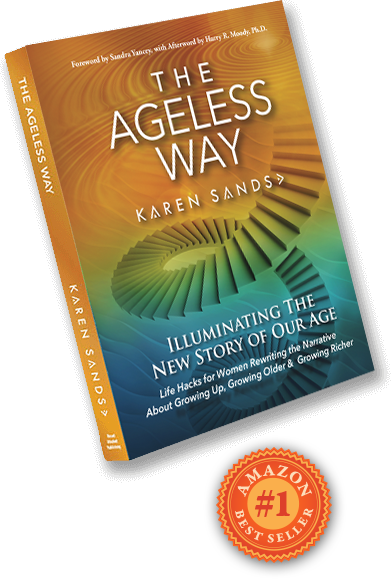 For years, at World Future Society meetings and elsewhere, NASA scientists and other climate experts have been urging professional futurists to heed the call to action: Our climate is changing at an unnatural, accelerated pace that if unchecked will have disastrous consequences. They woke us up to how bad things already were and how bad they could be. As a futurist and as a former science educator, having taught about the effects of greenhouse gases back in the late ’60s, I knew this message was urgent.
For years, at World Future Society meetings and elsewhere, NASA scientists and other climate experts have been urging professional futurists to heed the call to action: Our climate is changing at an unnatural, accelerated pace that if unchecked will have disastrous consequences. They woke us up to how bad things already were and how bad they could be. As a futurist and as a former science educator, having taught about the effects of greenhouse gases back in the late ’60s, I knew this message was urgent.
At one WFS meeting, Dennis Bushnell, a chief research scientist at NASA, discussed seven major and simultaneous societal issues, any one of which will greatly change society as we know it. “The impacts of all seven,” he said, “including potential synergisms, is approaching the unfathomable.” Number one on his list: climate change and energy shifts. Number three, very much linked with number one: water and food shortages and environmental issues.
He discussed several climate change impacts on our future:
- The arrival of ice in summer waters
- A greater projected rise in CO2
- The ocean rising faster and acidifying faster
- Fossil methane being release from tundra and ocean
- A reduced ocean CO2 uptake, which causes temperature increases, acidification, and algae reductions
- Offshore and near shore methane “burps” caused by ocean warming inciting undersea landslides, causing great tidal waves, which would lead to millions and millions of deaths
- Rapid glacial melting leading to many of the world’s rivers, which are glacially fed, to dry up, affecting 1/6 of the planet’s humans—soon
The Intergovernmental Panel on Climate Change (IPCC) estimates, based on solid science, that by 2100, world temperatures will be 5 to 6 degrees centigrade higher and that the sea level will rise a meter to 2.6 meters. The IPCC is cautious, even, because its conclusions are drawn from thousands of scientists. It’s possible that the situation will be much worse by 2100, with temps as much as 12 to 14 degrees centigrade higher. This would melt ALL ice, cause the ocean to rise about 75 meters, and directly affect over 2 billion people.
Gaia is self-correcting. The question is, How big a catastrophe, and how many, will it take for us to reach our tipping point, to emerge from emergency and save our planet, our future, ourselves?
Even as the evidence of climate change and its effects has continued to mount, often tragically, and as an unprecedented number of scientists agree that climate change is a real, human-caused problem, naysayers continue to reject the science and our responsibility to act. A small number of vocal, politically and financially (not scientifically) motivated people claim that climate change doesn’t exist, or that it’s natural and not caused by humans, or that the Earth is actually cooling. They trot out the same long-debunked “evidence” and use scientists to support them, even though these scientists have no expertise in climate change, kind of like asking your vet to diagnose and treat your heart condition.
Yet here we are, still in denial, as the damage accelerates and grows. The latest in the long line of global-warming impacts is the increased chance of severe flooding occurring every few years along our coastlines, east and west, as a result of rising sea levels (“Rising Sea Levels Seen as Threat to Coastal U.S.”). We can even plug in our ZIP code at http://sealevel.climatecentral.org/ and assess the likelihood of flooding in our current or future dream location. But still, upon hearing this, many people are blowing it off: “Oh, well, we have to die sometime,” or “We can move again before it happens.”
These statements come from smart folks in their 50s and 60s who are planning to move as a part of downsizing. Yet anyone pouncing on the “deals” in the Hamptons, the shoreline of the Carolinas, Florida, California, . . . are going to be in deep trouble in the next few decades, before most boomers will pass on. This is a very real threat. To Coasters, it threatens their homes, financial security, and very lives. Why take the chance of having to rebuild your home and your life? Even having to sell and move again seems like a waste of time, in the years when we could be realizing our greatest visions yet.
In fact, this threat would hit all of us in the pocketbook, as taxpayers, not to mention the effects on the family members of those hit by disaster. Even those inland are likely to be cut off from services if a flood knocks out the coast, not to mention the effects a flood would have on food and water availability, and the ripple effect on the environment.
So what now? It’s time to reassess what truly matters. As you figure out what’s next for you, make a list of MUST HAVE criteria, then look at your options to see which ones intersect with your list. Of these options, use all tools and information available to you (like the ZIP code search above if your “what’s next” involves moving) to narrow down your list realistically.
Consider also how you can integrate your vision for the future with ways to work in your local community to improve the future for all of us. We are on the front lines. It is our responsibility to protect the future for the next seven generations. Even though places like New York are taking steps to protect the shoreline, just imagine what happens to the financial solidity of the world if Manhattan is deluged. We have to do more than just build a wall to cower behind. We have to do everything we can to stop, prevent, or reverse the causes of these floods and other natural disasters.
If we keep our heads buried in the sand, we won’t even notice when our future gets washed away—until it’s too late.
| Download a FREE mini-book, “The Origins of the New HERstory of Our AGE“ based on The Ageless Way |








Leave a Reply
You must be logged in to post a comment.